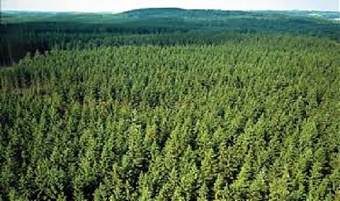Analytics, Ecology, Estonia, Markets and Companies
International Internet Magazine. Baltic States news & analytics
Sunday, 01.06.2025, 10:38
Area of Estonian forests turns out to be greater when measured by alternative method
 Print version
Print version |
|---|
While until now, the area of forests has been calculated on
the basis of statistical forest inventory (SMI) or a network of sample plots,
this time the maps of the Land Board were used for remote sensing and they were
merged with the forest survey data of the whole Estonia.
Forest areas were taken from the main map, removed from
which were roads, ditches, rides and power line routes, Allar Padari, chair of
Forest Management and Wood Processing Technologies at the Estonian University
of Life Sciences, said. This way, the total area of forests turned out o be
2.42 mln hectares. The area of forests calculated according to SMI is 2.33 mln
hectares. Based on the data, it can be concluded that 53.3% of Estonia's land
area is forest.
Padari added that 37.8% of managed forests are mature
according to the criteria set by Estonian law. A large portion of mature forests
is made up of fields and grasslands abandoned after the war. Already 25 years
ago, forest researcher Artur Nilson referred to the fact that we have a
lot of middle-aged forests as well as those about to become mature. By now,
they have matured.
The age structure of forests allows for an increase in
regeneration cutting, if desired. Over the next 10 years, the average cutting
capacity will be in the range of 11 to 16 mln square meters per year, plus
thinning volumes of approximately two mln square meters per year. Thus, the
recommended total cutting capacity over the next ten years could reach 13-18 mln
square meters per year. Of course, it is up to the forest owners to decide on
the scenario or pace at which the cuttings are to be carried out.
According to Padari, it appeared that the result obtained is in very good accordance with the SMI assessments made thus far. "Consequently, the results obtained with the SMI methodology used so far are quite accurate and once again the necessity of SMI for the assessment of Estonian forest resources has been proved," he added.
Measurements were made for Bioatlas to be created by the Natural Resources Institute Finland (Luke), and this large database will be available for public use. The working group included Allar Padari, Tauri Arumae, Mait Lang and Ahto Kangur. The studies were carried out with the help of assets of the "Maximizing added value and efficient use of raw materials in bioeconomy and its sectors in Estonia" project co-financed by the RITA applied research support measure of the Estonian Research Council and the European Regional Development Fund. Also involved were the assets of Interreg's "Baltic ForBio" project.








 «The Baltic Course» Is Sold and Stays in Business!
«The Baltic Course» Is Sold and Stays in Business!

